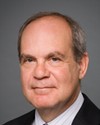Well actually, yes....
CAAR initiated a dialogue in 2005 or 2006—I can't quite remember the date—with Marine Harvest, the largest aquaculture company in B.C. One of the key issues in our dialogue with the industry was to look at interim measures that could minimize or mitigate the impacts of the farms in the Broughton Archipelago, specifically on wild out-migrating juvenile salmon. On that, we arrived at an agreement with Marine Harvest.
There are two primary migratory routes through the Broughton Archipelago. The fish come out of Knight Inlet and either go straight out Knight Inlet to the ocean or they go north and around through Tribune Channel and Fife Sound. The company has farms along both Knight Inlet and on the northern route as well.
We reached an agreement that they would alternate fallowing of those farms during the juvenile wild salmon out-migration period, that they would coordinate the Slice treatments, and that they would proactively treat for lice numbers. Right now the trigger threshold is such that when the farms reach three motile lice, they call in a veterinarian and apply the medicated feed. Marine Harvest agreed that when their farms were trending towards three motile lice—when they could see that rise was happening in the juvenile out-migration period—they would proactively treat to reduce the lice numbers. On the non-fallow route, they would only stock juvenile or sub-adult fish during the out-migration period, because there have been studies done in Norway showing they are less prone to lice infestation.
That was an active engagement with the company, trying to find mitigation and interim measures that would help reduce the pressure. It's proven to be fairly successful, and it led to the formation of the Broughton area monitoring program. The preliminary science—and I have to emphasize that it's preliminary science coming out of that program—indicates that the fallowing and coordinated treatment have reduced the lice levels on farms.
Oftentimes the industry will cite a study that was published by Dr. Krkosec, who has said that if we didn't do something we could lose the pink salmon within four generations, that they could be extirpated from Broughton. The industry could say, “Well see, he was wrong and it didn't happen”. But what his study actually indicated was that if nothing changed, this is what could happen. Things did change as a result of our work with Marine Harvest and their willingness to implement changes. Things did change and the results seem to show that the pressure was reduced somewhat.
That doesn't deal with the host of other factors affecting the ecosystem. It doesn't deal with escapes, the predators, the chemical use, or the use of Slice itself, which can probably be harmful to prawns. We need more study on that.
I'm sorry for this long-winded answer, but I do want to emphasize the fact that we have been making efforts to work in a constructive fashion with the open net cage industry. But I still am of the opinion that, ultimately, we need to transition out of the water.



